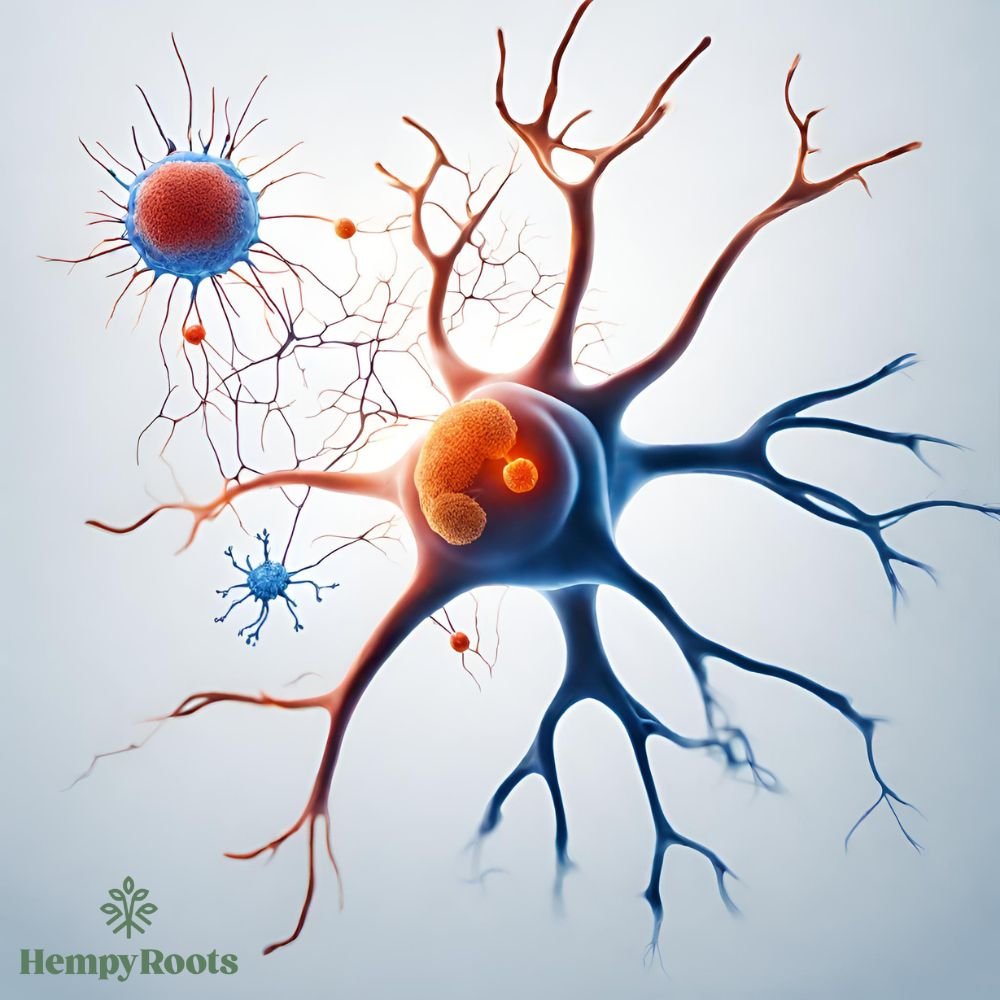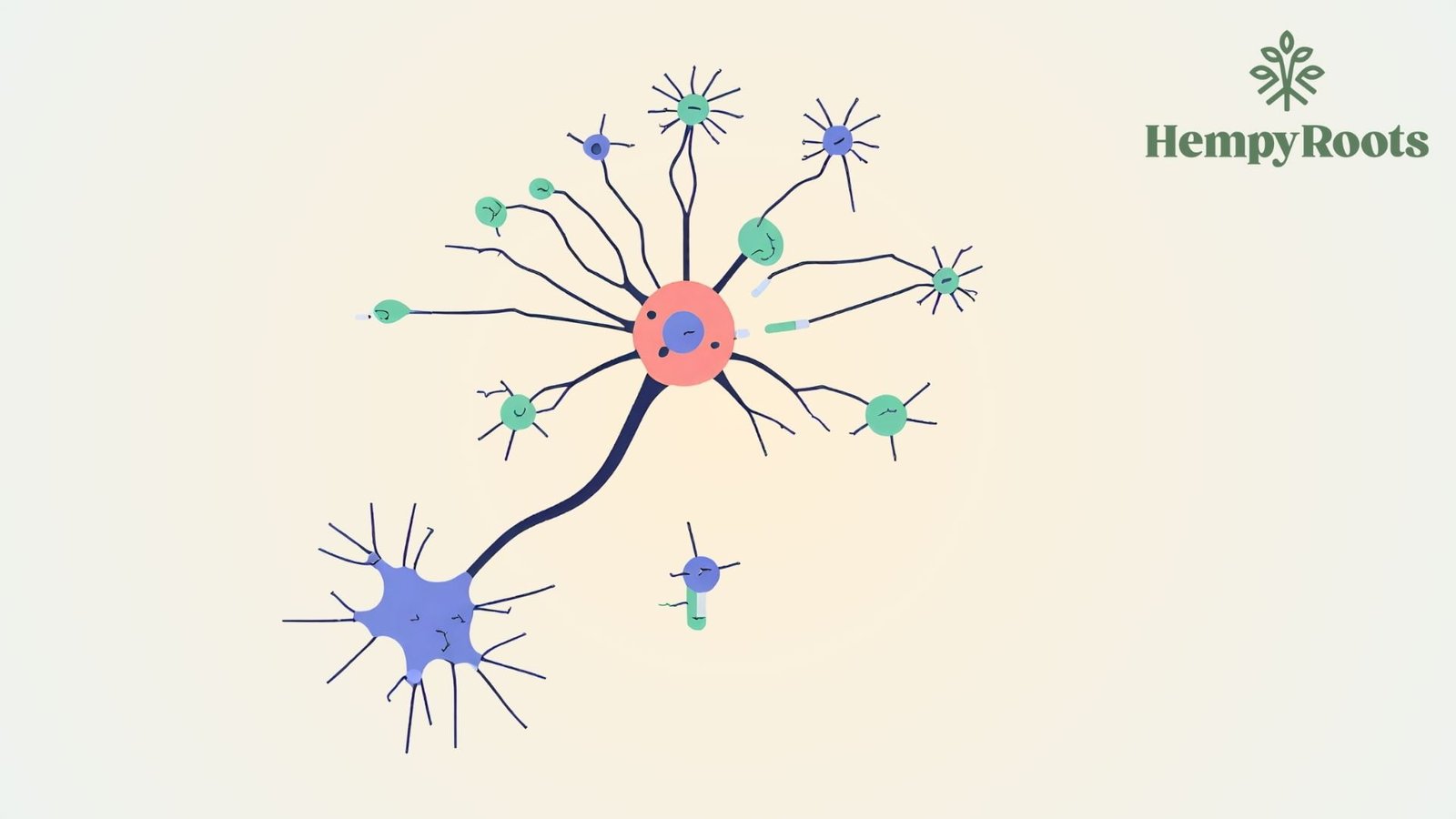The endocannabinoid system is a complex molecular signaling system found not only in the human body, but in practically the entire Animalia kingdom. The exception is insects and protozoa, which apparently have no endocannabinoid system. Its complexity is reflected in its ability to regulate a wide range of physiological functions and biological processes. From controlling mood, sleep and appetite to managing the stress response, immune function and regulating body temperature. The endocannabinoid system plays a central role in maintaining the body’s internal balance, known as homeostasis.
To understand the importance of the endocannabinoid system, it is essential to know its main components. This system is made up of three fundamental elements: endocannabinoids, cannabinoid receptors and the enzymes responsible for the synthesis and degradation of endocannabinoids.
Endocannabinoids are chemical compounds produced internally by our bodies in response to specific stimuli. Two of the best known endocannabinoids are anandamide and 2-arachidonylglycerol (2-AG). These compounds are produced on demand by neurons in response to conditions such as stress or pain and act as chemical messengers, interacting with cannabinoid receptors to modulate cellular activity.

Cannabinoid receptors are found everywhere in our body and are responsible for receiving signals from endocannabinoids. There are two main types of cannabinoid receptors: CB1 receptors and CB2 receptors. CB1 receptors are predominantly located in the brain and central nervous system, where they play a crucial role in regulating mood, appetite, memory and pain. On the other hand, CB2 receptors are predominantly present in the immune system and in peripheral cells, where they are involved in regulating the immune response and inflammation.

In addition to endocannabinoids and cannabinoid receptors, the endocannabinoid system also includes enzymes responsible for the synthesis and degradation of endocannabinoids. These enzymes play a crucial role in regulating endocannabinoid levels in the body, ensuring that they remain within the appropriate limits for homeostasis.
The main function of the endocannabinoid system is to maintain the body’s internal balance. When imbalances occur in different physiological systems, such as the nervous system or the immune system, the endocannabinoid system is activated to help restore homeostasis. For example, in response to stress, endocannabinoid levels can increase to help reduce anxiety and promote a state of calm.
As well as playing a fundamental role in regulating the human body, the endocannabinoid system is also crucial to the body’s response to exogenous substances, such as the cannabinoids found in cannabis. Phytocannabinoids, such as THC and CBD, can interact with cannabinoid receptors to produce a variety of effects, including mood changes, pain relief and reduced inflammation.
In summary, the endocannabinoid system is a complex and essential system for the health and well-being of the human body. The ability of this system to manage a wide range of physiological functions makes it a great target for the development of new therapies for a variety of medical conditions. Understanding the endocannabinoid system and its role in regulating the human body is undoubtedly fundamental to exploring its therapeutic potential and advancing modern medicine.
We hope this article has provided a comprehensive overview of the endocannabinoid system and its importance in regulating physiological functions. We are always ready to help you with any doubts or questions you may have about our products or the world of CBD in general. Don’t hesitate to get in touch!
And now, how about we explore some suggestions of our best products to get that endocannabinoid system working? 😀
Find out what’s new in our store
-
 Cachimbo YODA15,99 €
Cachimbo YODA15,99 € -
 Grinder Monstro6,00 €
Grinder Monstro6,00 € -
 Grinder Revólver11,00 €
Grinder Revólver11,00 €





